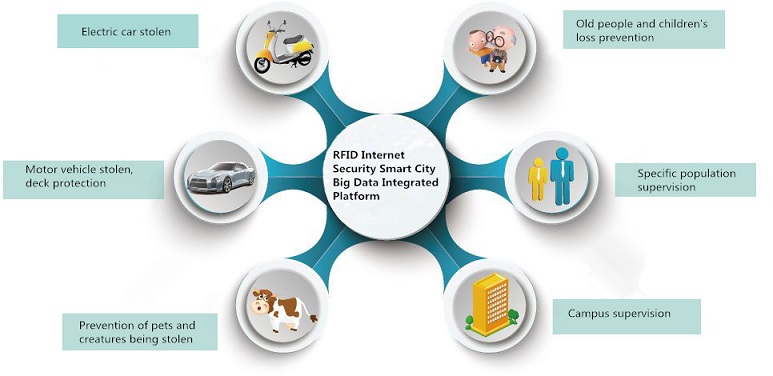 Call at :
+86 18681515767
Call at :
+86 18681515767
 Email :
marketing@jtspeedwork.com
Email :
marketing@jtspeedwork.com
 Call at :
+86 18681515767
Call at :
+86 18681515767
 Email :
marketing@jtspeedwork.com
Email :
marketing@jtspeedwork.com
Bottlenecks and opportunities that RFID technology will face in IoT applications
The bottlenecks and opportunities that RFID technology will face in IoT applications. In the definition of the Internet of Things, RFID, sensors, and barcodes are used to acquire object information anytime and anywhere, and then the object information is transmitted accurately and accurately through the network. Finally, the cloud is used for analysis and processing, and then various intelligent objects are implemented. Control and management has become an important foundation for many smart applications in recent years. For example, in the home Internet of Things application, the faulty refrigerator can be identified through the sensing device, and the fault message can be transmitted to the remote service server, so that the maintenance personnel can take the initiative to the household to perform the refrigerator repair.
In the IoT sensing layer, supply chain management is the most critical, but in the current supply chain management system, bar code technology is commonly used, resulting in a read-only one bar code, the same goods with the same bar code, etc. For example, regardless of the color of the clothes, the same style of clothes use the same bar code, can not meet the needs of customers or the market, increase or decrease the supply of clothes of a specific color, which also limits the efficiency of the supply chain.
If you switch to RFID, you can use the coding method to control the inventory of clothes of different colors. In addition, compared with bar code technology, the use of RFID can achieve a lot of economic benefits, such as the search and query of the goods list will be faster, which is beneficial to shorten the operation process; such as the cargo box on the conveyor belt, you can know the box without opening the box. The information of the goods can be verified before packing, and the quality of the inventory can be improved. The delivery of goods and the notification of loading can be automated, which not only prevents the leakage of goods, but also automates the bill of lading, and the transmission of information is not only faster. Accurate, can also increase the throughput of the distribution center.
According to the report, the growth of the UHF RFID tag market is mainly from apparel retail applications, which will exceed 2.2 billion in 2013. Applications that are placed behind apparel labels are asset tracking and other application scenarios such as warehousing/asset management, tobacco/food/wine calendar anti-counterfeiting, and vehicle/access control.
But RFID has been pushed for more than a decade, and there are still many application bottlenecks. In terms of cost, although the cost of labeling has fallen sharply, the price of the reader is still high, and the application surface needs to be greatly promoted. In terms of technology, since the reader has directionality and the RF signal is easily blocked by objects such as metal, an average of 3% of the readings are still unreadable. Zhang Yuzhang pointed out that to reduce the probability of unreadable, the technology can actually do, such as UHF RFID will continue to move towards ultra-low operating power, and with different special labels, metal carriers and water are no longer a problem to read. At present, it has been oriented towards the same label, and it can be used in different carrier directions, but it may also be derived from cost considerations.

UHF RFID is a near-far-reading technology that can be read from 1 cm to 15 meters, and can be used with the same tag for different applications and read distances. The requirements can be smoothly applied to supply chain management as long as they can overcome the aforementioned cost and technical problems.
The cost of RFID tags can actually be cheaper, because the latest technology can make RFID tags at least half the size; readers are also developing towards handheld, short-range applications and other products, and the choices are more and the cost of installation is also Therefore, it is possible to become lower; as for the misreading of the label, it can be solved through the system side, including increasing the antenna erection, thereby reducing the dead angle, or re-finding the detection process according to the condition of the RFID system.
Technologies used in the IoT awareness layer, including barcodes, UHF RFID tags, NFC, and graphics/sound/audio recognition. Since the cost of NFC labeling is much higher than that of RFID UHF tags, the two can perform their own functions. In the future, there should be only bar codes, UHF tags and sensors in the IoT perception layer, and NFC is on the financial line.
Different readers will also go in the direction of integration. Today's POS often requires a variety of readers, but future readers should have the ability to scan bar codes, NFC and UHF tags at the same time, which not only reduces the staff's The burden can also reduce the cost of the reading device.
The process of label travel is actually the process of data collection and transmission. Therefore, from the factory manufacturing, whether in product distribution, goods transportation, inventory management, store shelves, checkout or after-sales service, the label of the product must not only be able to provide information while flowing, but also not easy to fake, when consumers need to query information, The tag can be read directly.
The key point to overcome now is that Zhang Yizhang believes that how to let dealers and consumers read labels as they like, so IoT mobile phones will play a key role in moving logistics (UHF), cash flow (NFC) through smart mobile devices. And intelligent control is the key to the opening of the Internet of Things era.
Categories
New Blog
Copyright © 2025 Shenzhen Jietong Technology Co.,Ltd. All Rights Reserved.

IPv6 network supported